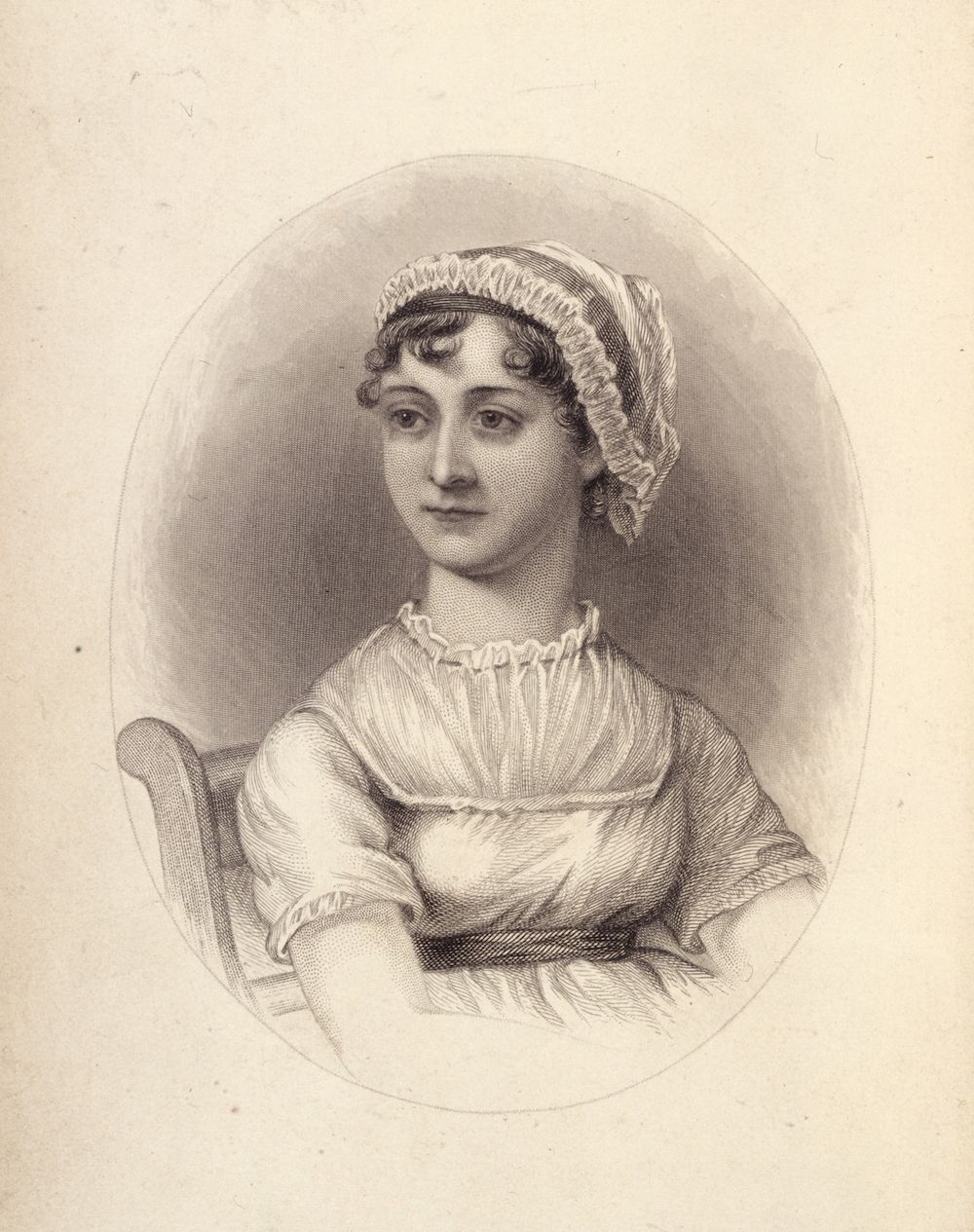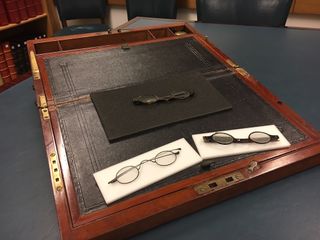Did Jane Austen Die of Arsenic Poisoning? Probably Not

Famed writer Jane Austen is known for her wit and plot twists, but the cause of her death might be more like a tale from a penny dreadful.
It's possible that the British writer — author of novels such as "Pride and Prejudice" and "Sense and Sensibility" — developed cataracts and died at the early age of 41 because of arsenic poisoning, researchers at The British Library said.
However, the conjecture is far from verified, and it's only the latest in a series of hypotheses about how Austen died. "It's a 100 percent pure speculation," said Dr. Mark Blecher, a surgeon and the co-director of cataract and primary eye care at Wills Eye Hospital in Philadelphia, who was not involved in the research. [10 Mysterious Deaths and Disappearances That Still Puzzle Historians]
The arsenic idea took root after researchers analyzed three pairs of reading glasses that allegedly belonged to Austen. When the author died in 1817, her sister Cassandra inherited her portable writing desk. The family kept the desk until 1999, when they placed it in the care of The British Library, according to a blog post published March 9 by Sandra Tuppen, The British Library's lead curator of modern archives and manuscripts.
Once the library acquired the desk, it had access to the desk's contents, including three pairs of eyeglasses that reportedly belonged to Jane Austen. To learn more about the spectacles, the library had the glasses examined by the company Birmingham Optical, which gauged their strength with an instrument called a lensmeter.
All of the glasses had convex, or "plus" lenses, indicating that Austen was farsighted and needed spectacles for up-close activities, such as reading, the library said. Interestingly, the three pairs of glasses — one wire-rimmed and two tortoiseshell-framed — had different prescriptions.
The glasses themselves aren't a surprise: Austen complained of her "weak" eyes in several letters. But the different prescriptions gave Simon Barnard, the London-based optometrist who examined the glasses, an idea: Perhaps Austen's eyesight went downhill because she had arsenic poisoning, he said, according to the library.
Sign up for the Live Science daily newsletter now
Get the world’s most fascinating discoveries delivered straight to your inbox.
People have known about the poisonous effects of arsenic, a crystalline metalloid found in the Earth's crust, since Roman times. It's linked an array of health problems, including cancers of the skin, lung, bladder, kidney and liver, according to the U.S. National Institutes of Health. Exposure to arsenic is also linked to the development of cataracts, a clouding of the lens of the eye, Barnard said.
Nonetheless, arsenic still found its way into Britain's 19th-century "medicines" and the water supply, the library said. It was also used as a poison.
Arsenic-induced cataracts?
Cataracts occur when the lens of the eye becomes cloudy and less flexible. More than 90 percent of Americans have a cataract by age 65, according to the University of Michigan Kellogg Eye Center.
But it's not known whether Austen actually had cataracts. Perhaps she used the three sets of spectacles for different activities — one for distance viewing; another, slightly stronger pair for reading; and the third for very up-close work, such as fine embroidery, Barnard said.
"If Austen did develop cataracts, a more likely cause, according to Professor Barnard, is accidental poisoning from a heavy metal such as arsenic," Tuppen wrote in the blog.

However, Blecher doubts the arsenic explanation is true. There are a number of other conditions that can cause cataracts in younger people — genetic predispositions, trauma to the eye, diabetes and certain genetic conditions with enzyme deficiencies — and chronic arsenic poisoning is much farther down the list, he told Live Science. [Pick Your Poison: Some Venom Can Be Healing]
"In some areas of the world, where there is arsenic in the drinking water, there is higher incidence of cataracts," Blecher said. "Arsenic is found in the lens of the eye more than in any other part of the eye, so it does seem to concentrate there. The presumption — and it is a presumption — is that it is causative for higher incidence of cataract."
Moreover, the majority of cataracts don't cause prescription changes. When they do, they usually increase the need for "minus" prescription glasses (to see far away), Blecher said, but it's unclear whether Austen went from a low prescription to a high prescription, or vice versa, he said.
Thus, the mystery behind Austen's death is still anyone's guess. Other experts have attributed her demise to Addison's disease (an endocrine disorder), cancer and tuberculosis, The British Library said. Interestingly, the crime writer Lindsay Ashford floated the idea of arsenic poisoning in 2011 after learning that Austen had an unusual facial pigmentation that could be attributed to arsenic poisoning, the library said.
The new eyeglass theory provides additional support for arsenic poisoning, but the library noted an important caveat: It's possible that Austen didn't get custom-made prescriptions but rather picked them "off the shelf," even if they didn't fit her vision perfectly, the library said. As such, the varying prescriptions might not signify much, the library implied.
The glasses are on display in The British Library's free Treasures Gallery.
Original article on Live Science.

Laura is the archaeology and Life's Little Mysteries editor at Live Science. She also reports on general science, including paleontology. Her work has appeared in The New York Times, Scholastic, Popular Science and Spectrum, a site on autism research. She has won multiple awards from the Society of Professional Journalists and the Washington Newspaper Publishers Association for her reporting at a weekly newspaper near Seattle. Laura holds a bachelor's degree in English literature and psychology from Washington University in St. Louis and a master's degree in science writing from NYU.


